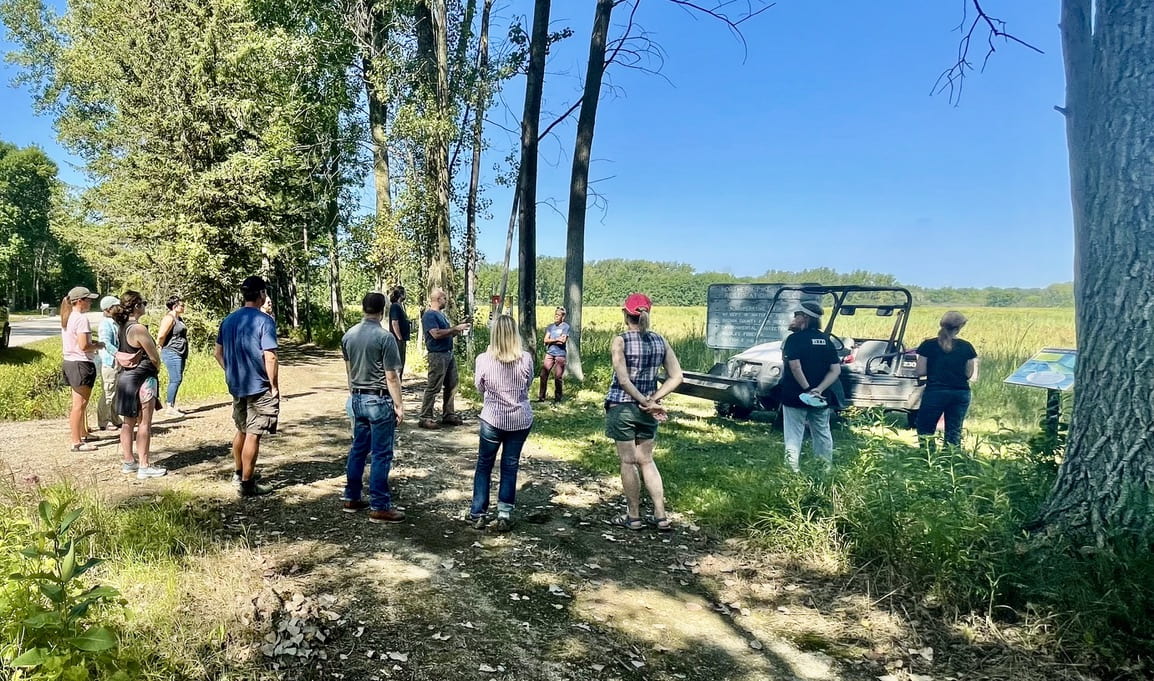UW-Green Bay hosts workshop for teachers to visit Green Bay restoration sites

The University of Wisconsin-Green Bay and Green Bay Restoration Team hosted a teacher workshop to visit Green Bay west shore wetland restoration sites on August 17th. Eleven teachers got a rare opportunity to visit Cat Island Restoration Site, a former chain of three islands located off the Lower Green Bay west shoreline.
The group met with Gary Van Vreede, biologist from the US Fish & Wildlife Service, who gave an on-site presentation about Cat Island restoration and monitoring efforts. The islands were washed away in the 1970s by high water levels, storm waves, and ice shoves. Now the islands are being rebuilt, providing protection to coastal marsh and underwater plant communities that are critical fish and wildlife habitats.
In past years, the islands had supported at least 13 different species of colonial nesting birds—one of the highest biodiversities of any Great Lakes island. The tour continued at Barkhausen with Jason Petrella of Brown County Parks discussing northern pike restoration efforts. The workshop closed with a presentation by team member and First Nations in Education doctoral student Kathleen Ratteree.
The presentation included Tribal conservation perspectives, Traditional Ecological Knowledge, and treaty rights. This conversation centered on how non-Native educators can take action as allies in the classroom and support the sovereignty of Native nations in Wisconsin. The Green Bay Restoration Team provided folders with printed resources for the teachers to use in their classrooms. These resources included northern pike information, a culture card about Native Nations in Wisconsin, information about GLIFWC, a treaty timeline from First Nations of Wisconsin website, and Act 31 information.
The teachers in attendance hailed from nine school districts throughout northeastern Wisconsin, teaching elementary through high school students in the sciences. By providing resources and hosting events like these, teachers will be able to effectively engage their students in the classoom with local restoration efforts and Traditional Ecological Knowledge.
Submitted by Kathleen Ratteree, Manoomin Wild Rice Project


